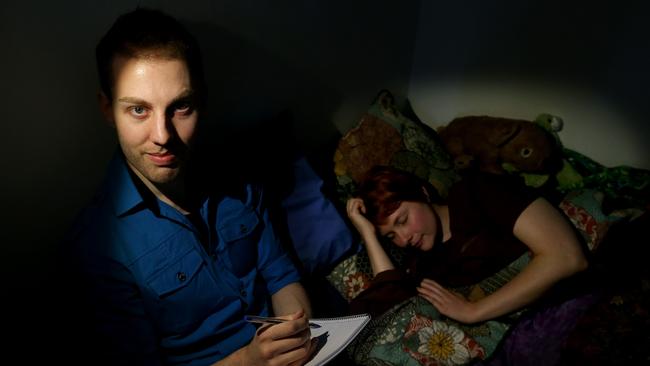Adelaide researcher finds the best pathways to lucid dreaming
While we can’t travel overseas or go to wild parties and concerts, maybe it’s time to take up lucid dreaming, so we can do that (and more) in our sleep. Adelaide research has tested different ways to induce vivid, life-like and fulfilling experiences while dreaming.

SA News
Don't miss out on the headlines from SA News. Followed categories will be added to My News.
- Adelaide researcher finds Vitamin B6 helps you remember dreams
- Subscribers can win a kitchen makeover
Ever wished you could fly, fight demons or control the weather? In dreams, anything is possible and one Adelaide scientist has devoted his career to testing the techniques that can give people these powers.
This week Dr Denholm Aspy, based at the University of Adelaide, is celebrating the publication of findings from his International Lucid Dream Induction Study in the journal Frontiers of Psychology.
“This is the biggest study of its kind ever conducted in about 50 years of research on lucid dreaming, certainly the largest and the most in-depth one,” he said.
“So this is like the peak of my lucid dreaming career so far.”
That career began with a PhD in psychology on this topic at the university (2016) and has continued with talks, workshops and now online courses alongside research which tests existing techniques for inducing the lucid dream state.
As Dr Aspy explained, lucid dreaming is when the dreamer is aware at the time that they’re dreaming and controls the experience.
Previous studies have shown therapeutic benefits such as nightmare treatment, perfecting physical skills and abilities through rehearsal, and for creative problem solving.
In this study, Dr Aspy tested five techniques for inducing lucid dreaming. Two of these were found to work best, but combining the two in a hybrid technique was worse.
Both require waking after five hours of sleep and then performing a specific action.
The “mnemonic induction of lucid dreams” technique involved repeating the phrase “next time I’m dreaming, I will remember I’m dreaming”.
The “senses initiated lucid dream” technique involved repeatedly shifting attention between visual, auditory, and physical sensations before returning to sleep.
Superior dream recall and the ability to fall asleep within 10 minutes of completing the technique were predictors of success.
Dr Aspy said the research made lucid dreaming more accessible for people and now, with everyone spending more time at home, was the perfect time to experiment.
His favourite experience was creating a hurricane, with wind tearing the trees.
“It was really intense and really incredible,” he recalled.

